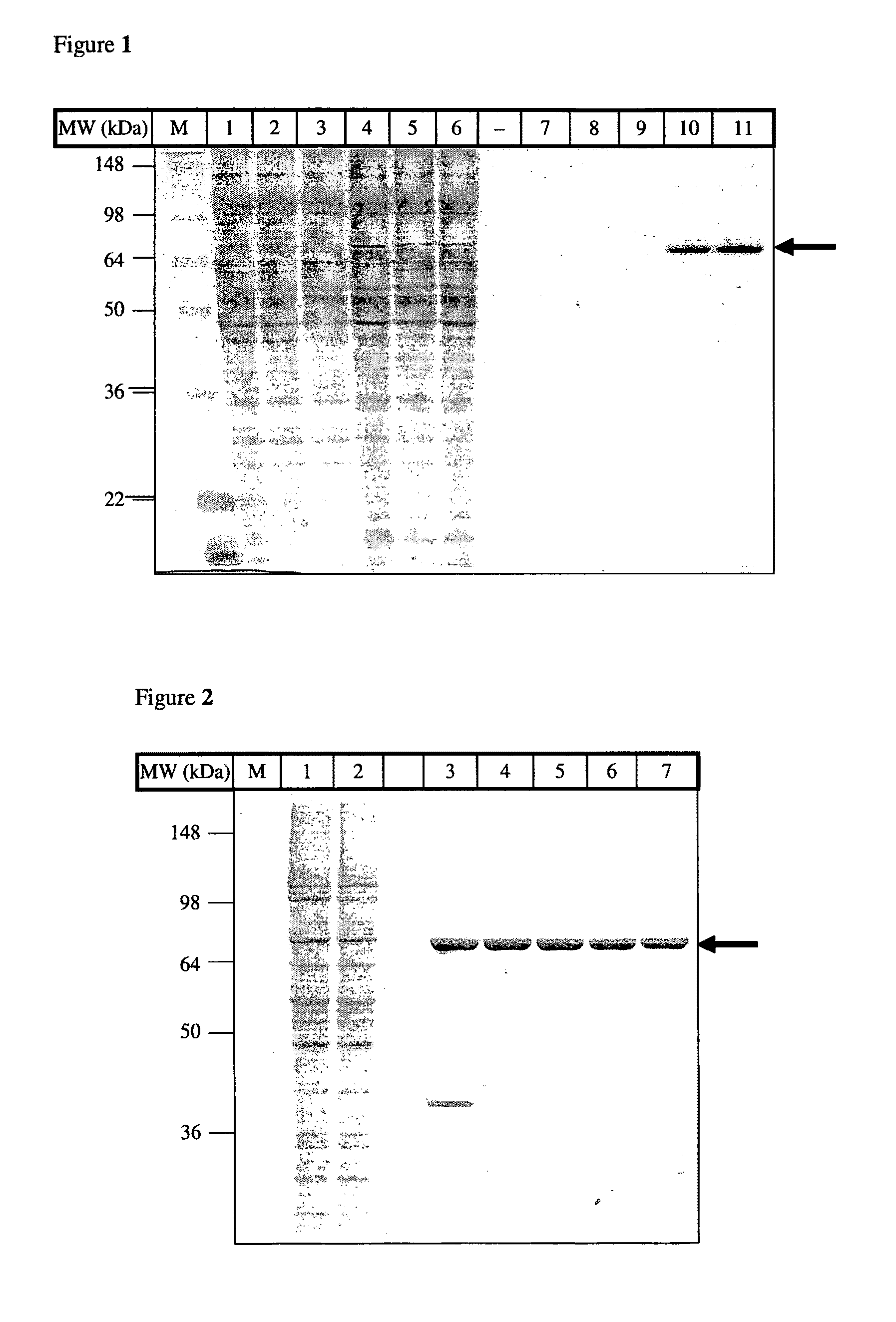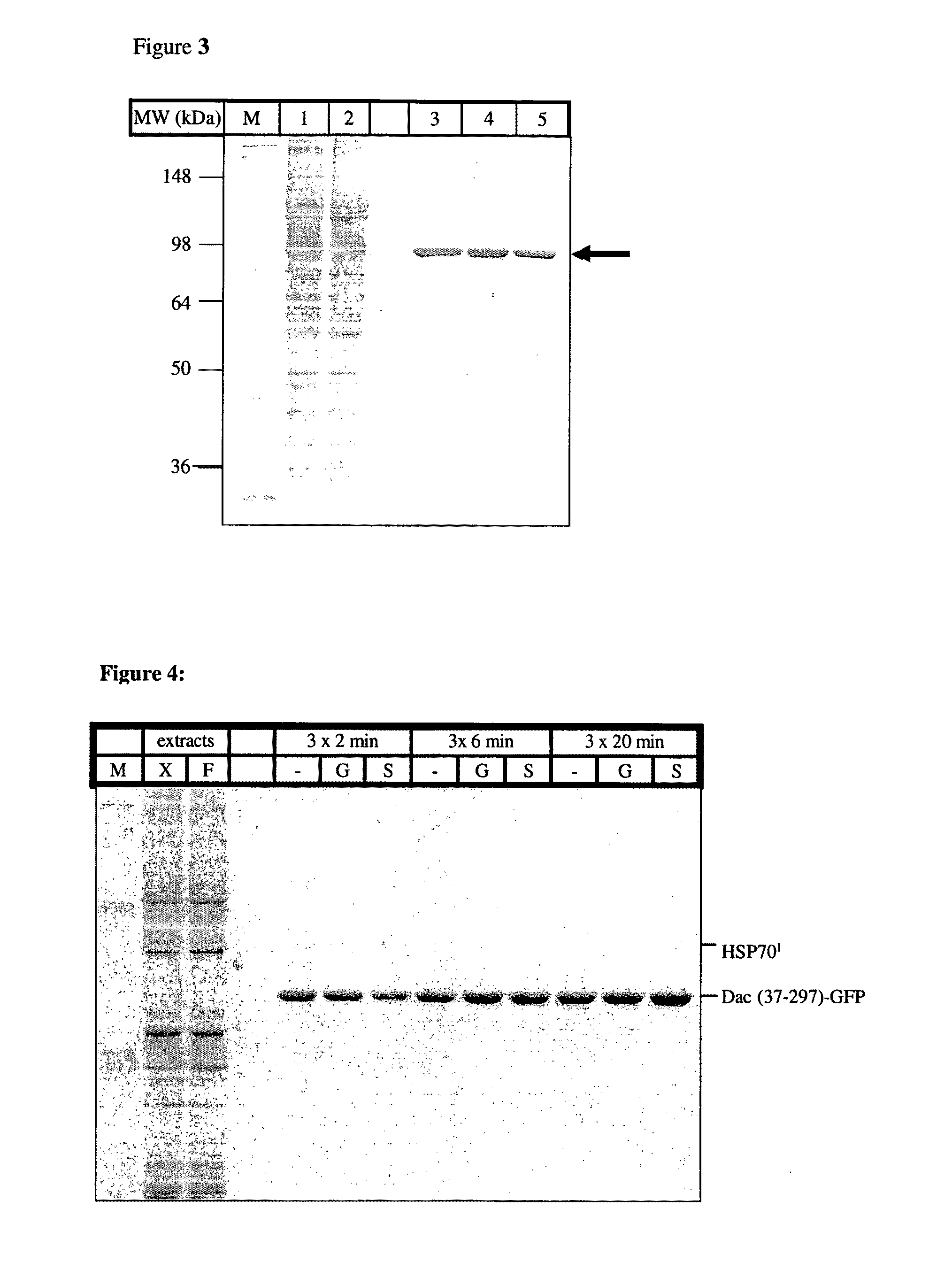Peptide tag and uses thereof
- Summary
- Abstract
- Description
- Claims
- Application Information
AI Technical Summary
Benefits of technology
Problems solved by technology
Method used
Image
Examples
Example
MATERIAL AND METHODS
Cloning of the dac A Constructs
[0086]The dac-A fragment Met37-Asp 392 was cloned by PCR using the forward primer ATCGCTAGCCACCATGATCCCGGGTGTACCGC and the reverse primer GTAAGCTTGGGCCCCTGGAACAGAACTTCCAGATCAATGATTTTGCCGAA GAAGTTACC. A site for PreScission protease was added, followed by a multicloning site. The PCR fragment was cloned into Nhe1-HINDIII sites of the pEGFP-N1 vector. The insert was subcloned into various expression vectors, such as pEGFP for expression in human cells and pET24 and pET28a for bacterial expression.
Cell Culture and Transfections
[0087]HEK293 cells were grown in Dulbeccos Modified Eagles Medium (DMEM), supplemented with 10% fetal calf serum at 37° C. in an atmosphere containing 5% CO2. 10 cm dishes cells were transfected using the Calcium Phosphate method. Briefly, for each dish of cells 5-15 μg DNA was mixed with 61 μl 2 M CaCl and made 500 μl with H2O. Then 500 μl 2×HBS (50 mM HEPES pH 7.4, 280 mM NaCl, 1.5 mM Na2HPO4×2 H2O) was added d...
PUM
| Property | Measurement | Unit |
|---|---|---|
| Temperature | aaaaa | aaaaa |
| Temperature | aaaaa | aaaaa |
| Affinity | aaaaa | aaaaa |
Abstract
Description
Claims
Application Information
 Login to View More
Login to View More - R&D
- Intellectual Property
- Life Sciences
- Materials
- Tech Scout
- Unparalleled Data Quality
- Higher Quality Content
- 60% Fewer Hallucinations
Browse by: Latest US Patents, China's latest patents, Technical Efficacy Thesaurus, Application Domain, Technology Topic, Popular Technical Reports.
© 2025 PatSnap. All rights reserved.Legal|Privacy policy|Modern Slavery Act Transparency Statement|Sitemap|About US| Contact US: help@patsnap.com



